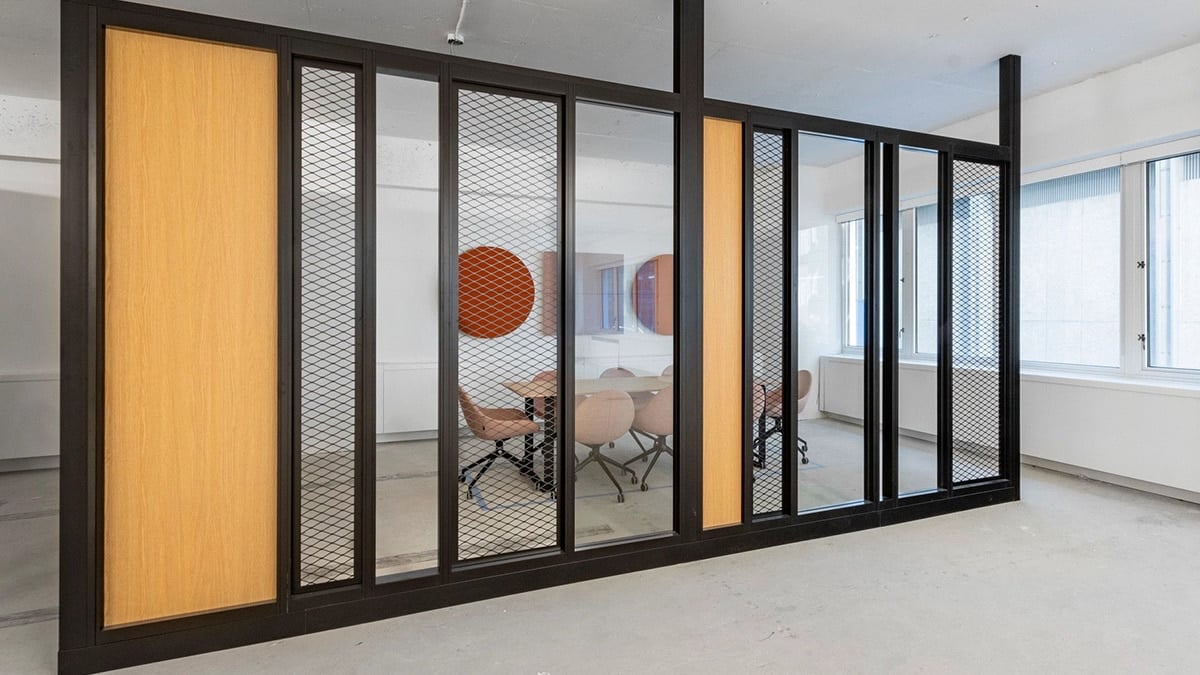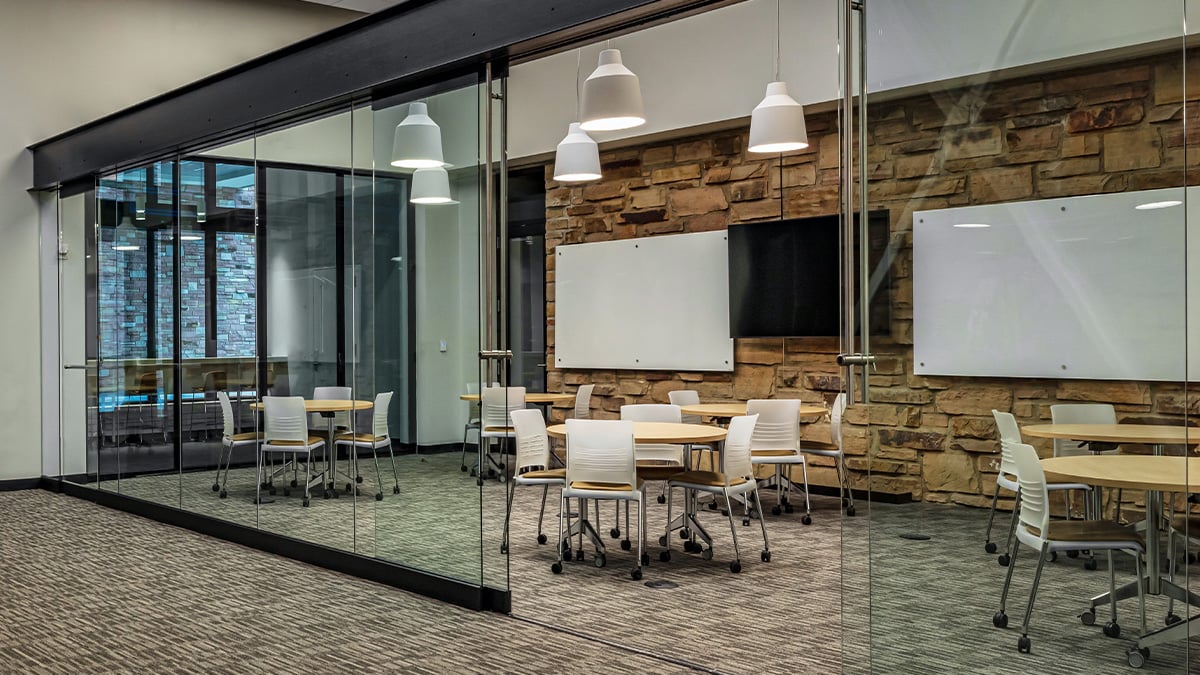- What's New
- Pricing & Purchasing
- Lead Times
- Literature & Samples
- Services & Warranties
- Careers
- Find a Rep
Quiet By Design: How to Achieve Exceptional Acoustics with Architectural Walls

From open offices to quiet study spaces, discover how the design of architectural walls can help you improve acoustics for collaboration, focus, and privacy in modern work and learning environments.
![]()
Sound profoundly affects where people prefer to work. When your office is characterized by the din of chatter and hubbub, you may find it incredibly hard to focus, or you may love the white noise and energy. Research shows that more than 50 percent of people working in a cubicle believe acoustics interfere with their ability to get their job done.
Strong acoustics also keep confidential conversations private, which is especially critical in healthcare facilities. On college campuses, ample acoustics help separate conversations among peers from nearby students who are studying solo.
Below, we take a look at the acoustic needs for different styles of work and explore how to achieve them while maintaining the flexibility that is key to today’s work and study spaces.
Workplaces Are Getting Noisier
As employers gravitate toward open concept offices, more workstations are often placed closer together with fewer physical barriers to block sound from traveling. Architectural trends like high ceilings and exposed beams pose a challenge, too.
And with the rise of hybrid work, two employees who might have otherwise walked down the hall to a meeting room might now meet virtually—with one person on Zoom at home, and the other person on Zoom at their desk—right next to their colleagues.
All this noise impacts how we function. Other than fire alarms and ambulance sirens, workers find human voices the most disturbing.
But employees aren’t just worried about overhearing their neighbor’s conference call. In many cases, people are concerned about others overhearing their conversations. According to UC Berkeley research, employees are more dissatisfied with individual speech privacy than general noise levels.
Supporting Work Styles with Acoustics
Some background noise doesn’t always hurt. Throughout the course of the day, people switch up how and where they work. Some tasks call for complete silence, while others lend themselves to the hum of a café-style environment.
We’ve identified four work styles that encompass these different preferences – and their acoustic needs:
Achieving Acoustic Goals
There are a variety of challenges to achieving acoustic goals. Chiefly, sound will always travel the path of least resistance. Noise can find its way through an askew ceiling tile, an opening beneath the door, ductwork gaps, and more.
![]()

A few different design solutions help prevent sound travel:
- Soffits and bulkheads prevent sound from transferring through the ceiling to adjacent rooms, so they’re ideal where speech privacy is paramount. But they don’t provide flexibility to change the space as needs evolve.
- Closed cell foam gasket seals close off connections where architectural walls meet the ceiling or surrounding built walls. These are more flexible than soffits and bulkheads.
- Flush or recessed ceiling tracks help seal off sound from where architectural walls meet the ceiling.
- Door seals around door frames and mechanical drop seals prevent sound from leaking through the sides and undercut of a door.
- Self-leveling capabilities help architectural walls remain flush to the floor, even in spaces with varying or uneven floor heights.
![]()

The easiest way to improve a wall’s ability to block sound is to add mass to it, with the likes of steel, aluminum, glass, or gypsum. Specific types of glass can help, too:
- Single-glazed glass is made of a single pane and is sufficient for most offices’ acoustic performance.
- Laminated glass is made of two panes of glass put together with an adhesive. It’s very good at blocking mid- to high-frequency speech.
- Double-glazed glass is made of two panes of glass with a layer of air between them. Depending on the air gap size and glass thickness, this glass can reach the highest acoustic performance of this group.
![]()

To absorb sound, consider upholstered or PET magnetic inserts or acoustic flyover panels within a given space.
![]()

Sound masking can also improve acoustics and speech privacy through an array of speakers that create artificial background noise to compete with distracting sounds.
![]()
All-Purpose Acoustic Privacy
As employers and school administrators increasingly support different work and study styles, physical spaces will need acoustics that meet the needs of a diverse group.
Strategically designed architectural walls provide various levels of acoustic performance and unmatched flexibility wherever privacy and quiet environments matter most.
Discover how you can increase acoustic performance in your space with our rigorously tested architectural wall portfolio linked below. Or, simply contact your dedicated sales specialist, and our trusted experts will walk you through all the steps and considerations in designing an acoustically sound working or learning space.
Related Content
 Blog
Blog
Launching an office renovation can be overwhelming. Our architectural walls make that process as simple and affordable as possible.
 Blog
Blog
Consider these factors when designing your space to achieve acoustical and visual privacy.
 Blog
Blog
Easy to install and reconfigure, architectural walls can help “future-proof” your space with agile functionality and superior aesthetics.
Subscribe
Stay up to date with the latest trends and more.




